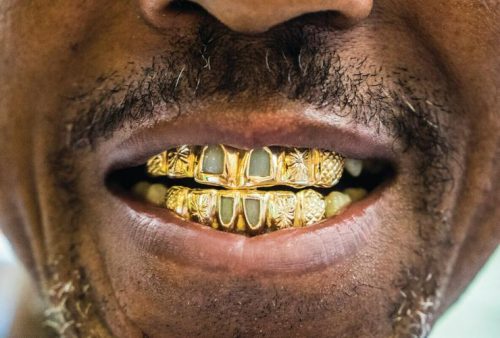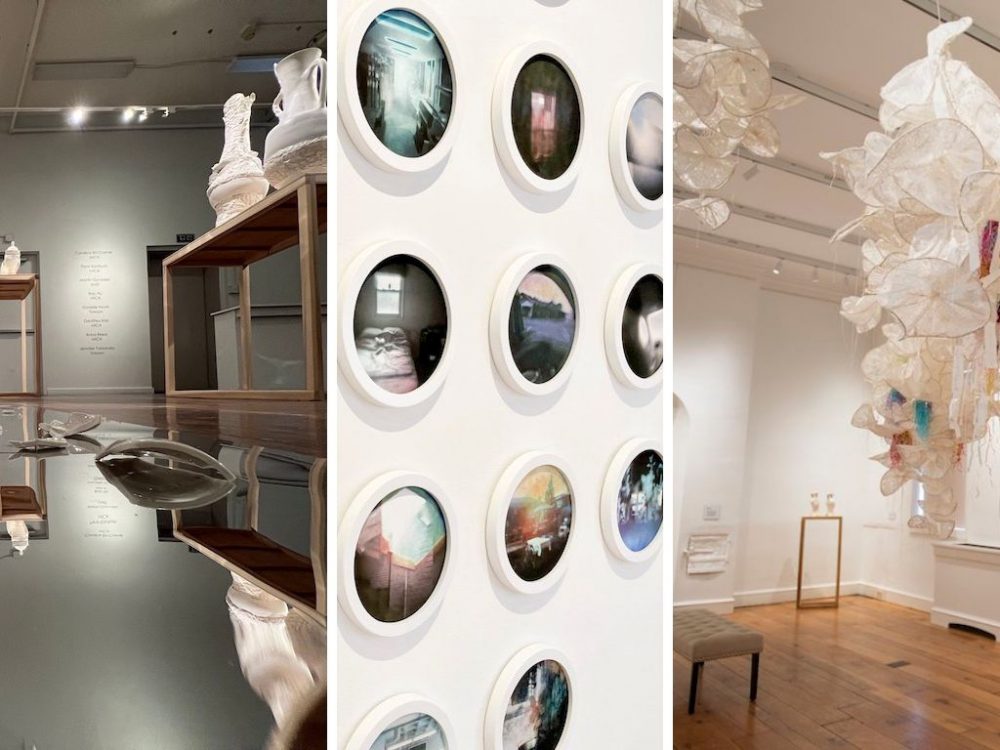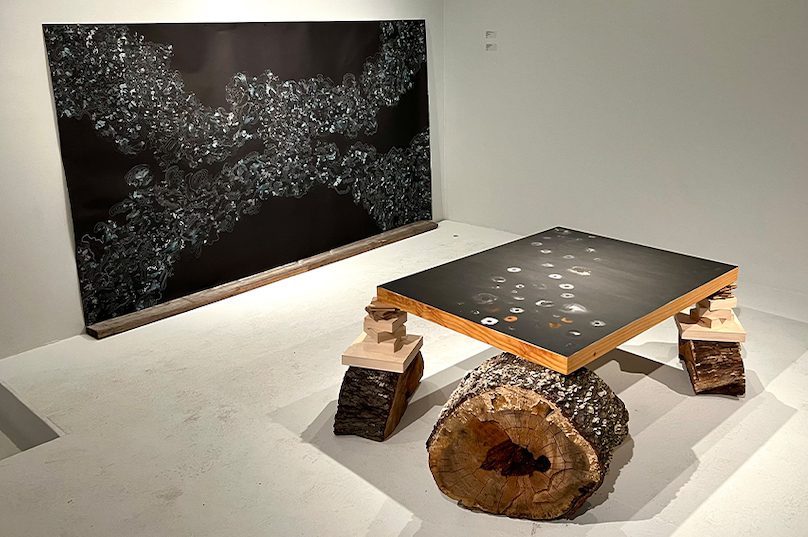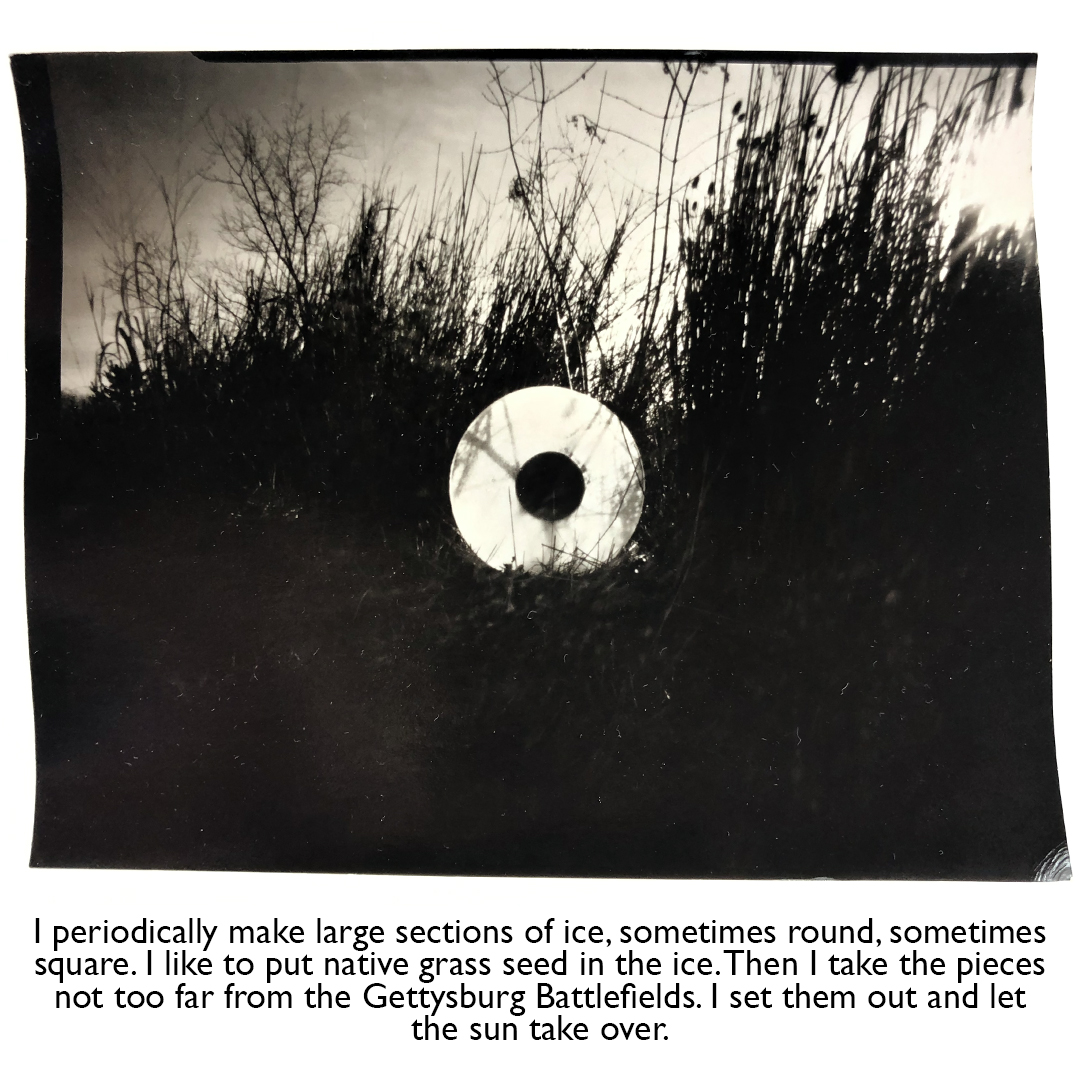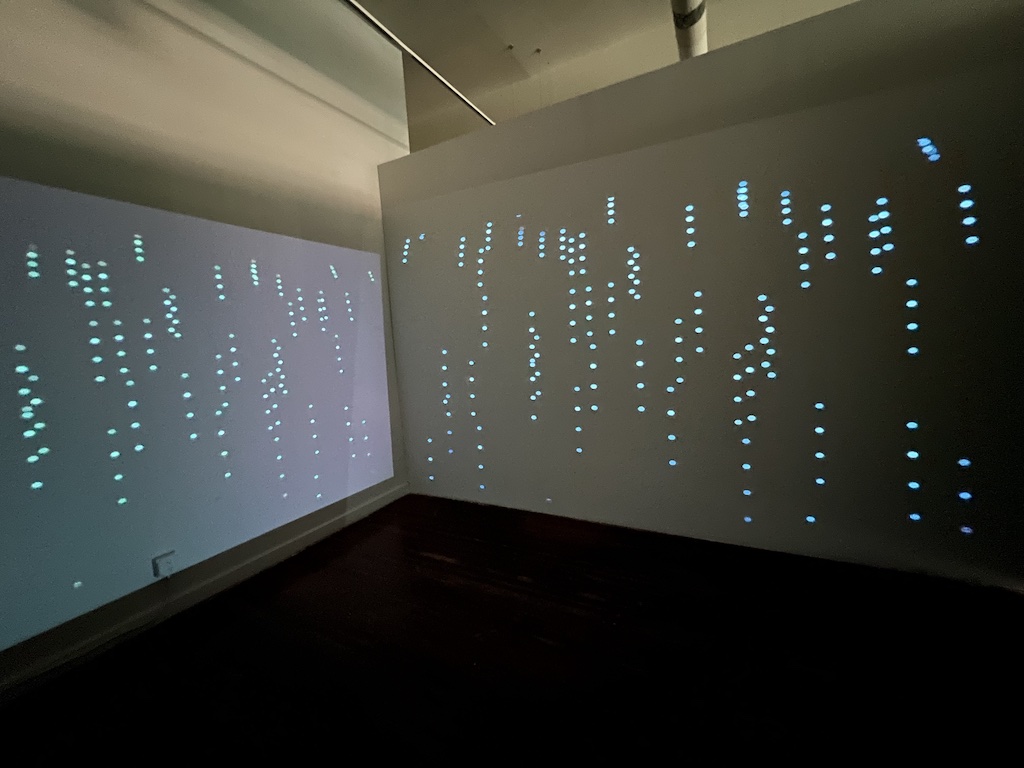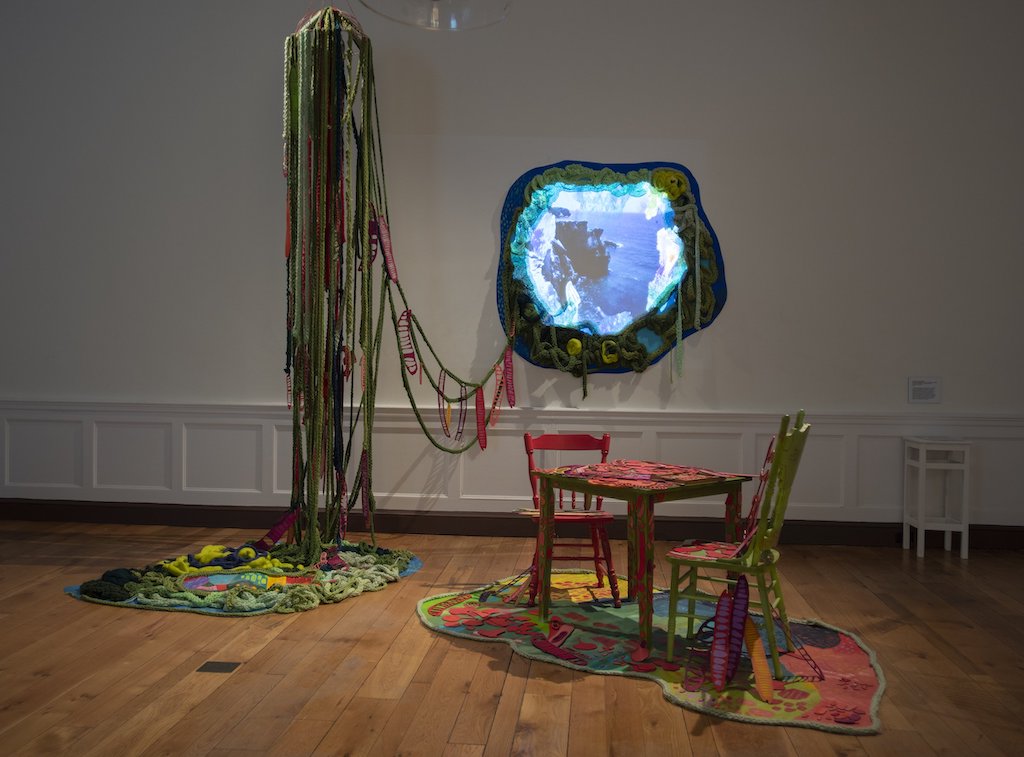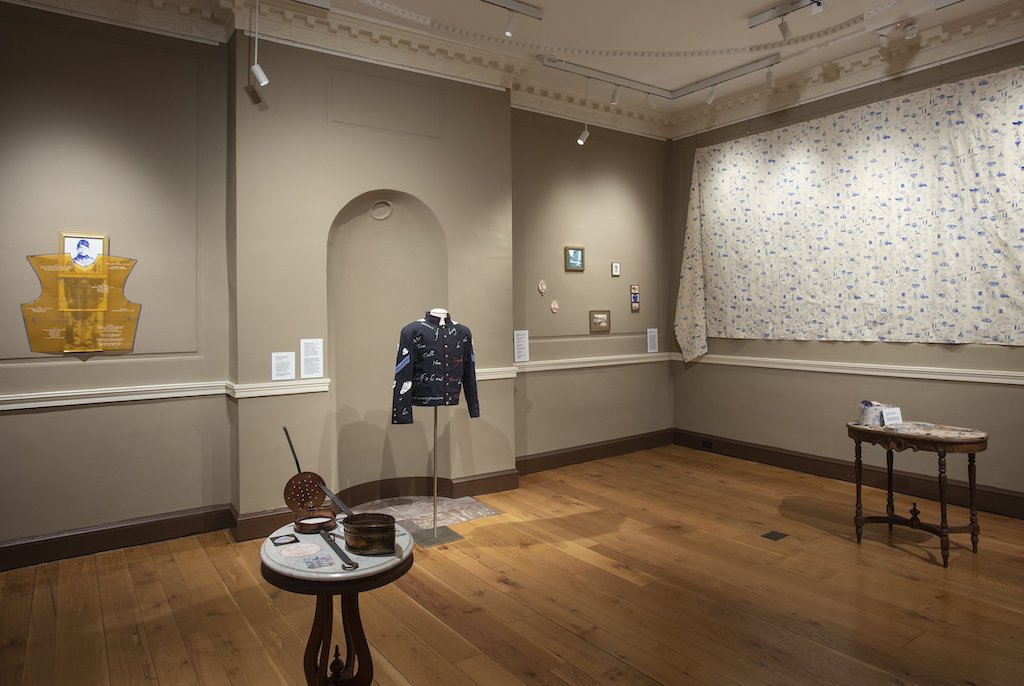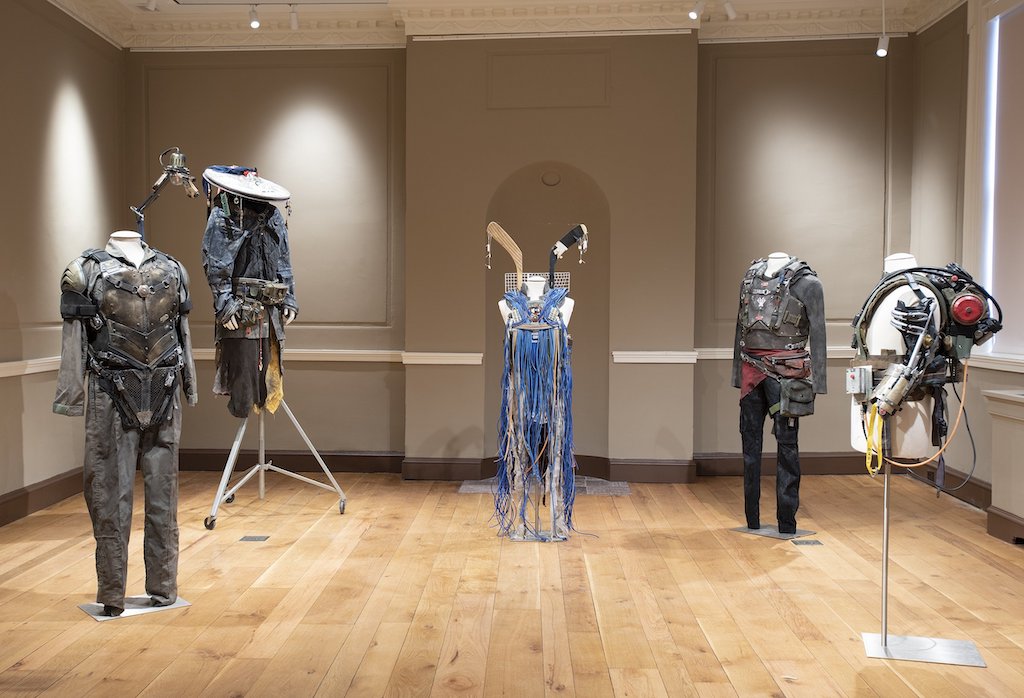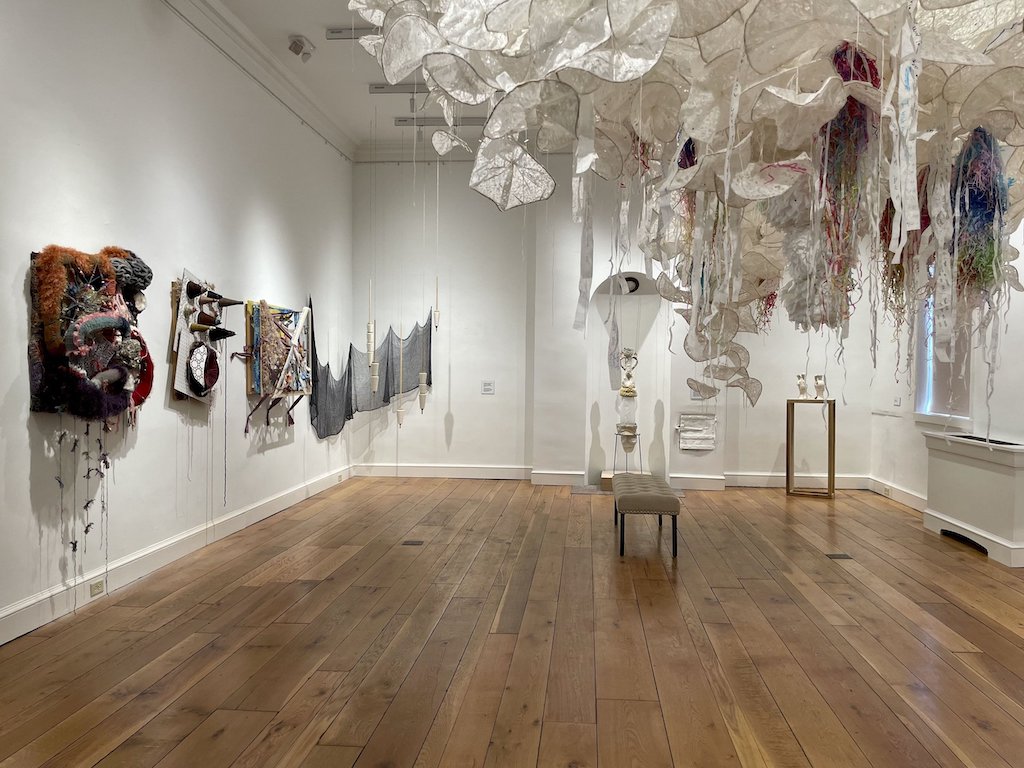Irene Chan’s exploration of a Chinese Civil War soldier through archival photographs, embroidered jacket, and cutouts also dissects history and represents it to question history and race, and to specifically acknowledge the role of a man has come to be known simply as “Thomas” (also known as Thomas Sylvanus, Ching Lee, Ye Way Lee, and Ah Yee Way). He was brought to the United States from China and enslaved in Baltimore, but after running away he joined the Union Army and fought in the Civil War, sacrificing his own safety for a country that met him with little more than hate. Chan’s work centers an opportunity to atone for the injustices of the past, a necessary part of understanding current social and political contexts in the hopes of building a more equitable future.
Natural transformation and landscapes become a place of metamorphosis, emergence, and rapture. Lynn Tomlinson’s somber stop-motion animation and ballad explores a changing climate and the effects of sea-level rise on a home in the Chesapeake. Created with clay on glass, it is vivid, fluid, and painterly like water. The environmental backdrop to the human experience is a crucial one as we affect and are affected by our ecosystem.
Foster Reynolds-Santiago explores a spiritual connection between Puerto Rico’s natural landscape and transgender inhabitants in “Transgender Euphoria: Puerto Rico’s Queer Exaltation.” The multi-sensory installation includes hanging knitted fabrics resembling the Flamboyán tree, a desk and chairs with abstracted images reminiscent of the fruit of the tree, a figure with scars on their chest as an allusion to gender-affirming surgery, and a stop-motion animation projection, layered with a multi-generational conversation with a melody of crickets and frogs.
Other works also lean into the metamorphosis of natural elements, such as Timothy Nohe’s “Uncultivated: Flowering Bodies,” a collection of digital images produced using an artificial intelligence program. These renderings present hybrid creatures that are a result of cross-pollination between different entities, such as mushrooms, flowers, insects, a heart, and flesh. Such transformations are exciting speculations for a time where we need to rethink humanity’s role and home in nature.
The exploration of ephemerality and change is present in Chris Peregoy’s work: delicate pinhole camera images called “Time Capsules.” The images in circular frames appear to be snapshots through peepholes and windows that transport viewers to simple yet beautiful scenes of a backyard, a porch, or a bedroom. Kat Navarro’s tufted soft-sculpture installation and animation projection transport me to a memory of Lake Laurel in Massachusetts where I walked on a luscious carpet of sphagnum moss. Navarro’s installation ponders childhood memories of playing outdoors fueled by curiosity and exploration.
